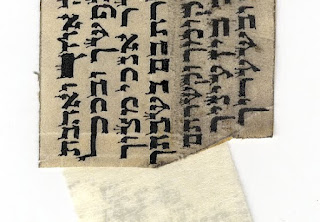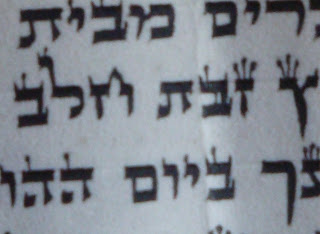I'm new to this group so I thought I'd start off with a question. Normally, I use some form of afeitzim based dyo for daily writing, either homemade, Nahari, or Hadar depending on the task, the amount of gloss desired, and so on. I recently came across bottled Japanese sumi ink. After some digging, I learned that it's made from vegetable oil soot, water, a synthetic binder and borneo camphor, some brands contain shellac to make it waterproof, but apparently no products directly derived from animals. As one who spends a lot of time restoring old faded sifrei Torah, I've developed a keen interest in finding, a permanent, archival black ink, that won't fade, or crack over time. I know many of us use rapidograph ink, but that doesn't seem to come in a bottle. Would sumi ink be kosher for STAM? I've made some preliminary experiments on klaf and find that it has many of the same properties as regular sofer's ink. It's intensely black, dries sli






.JPG)







